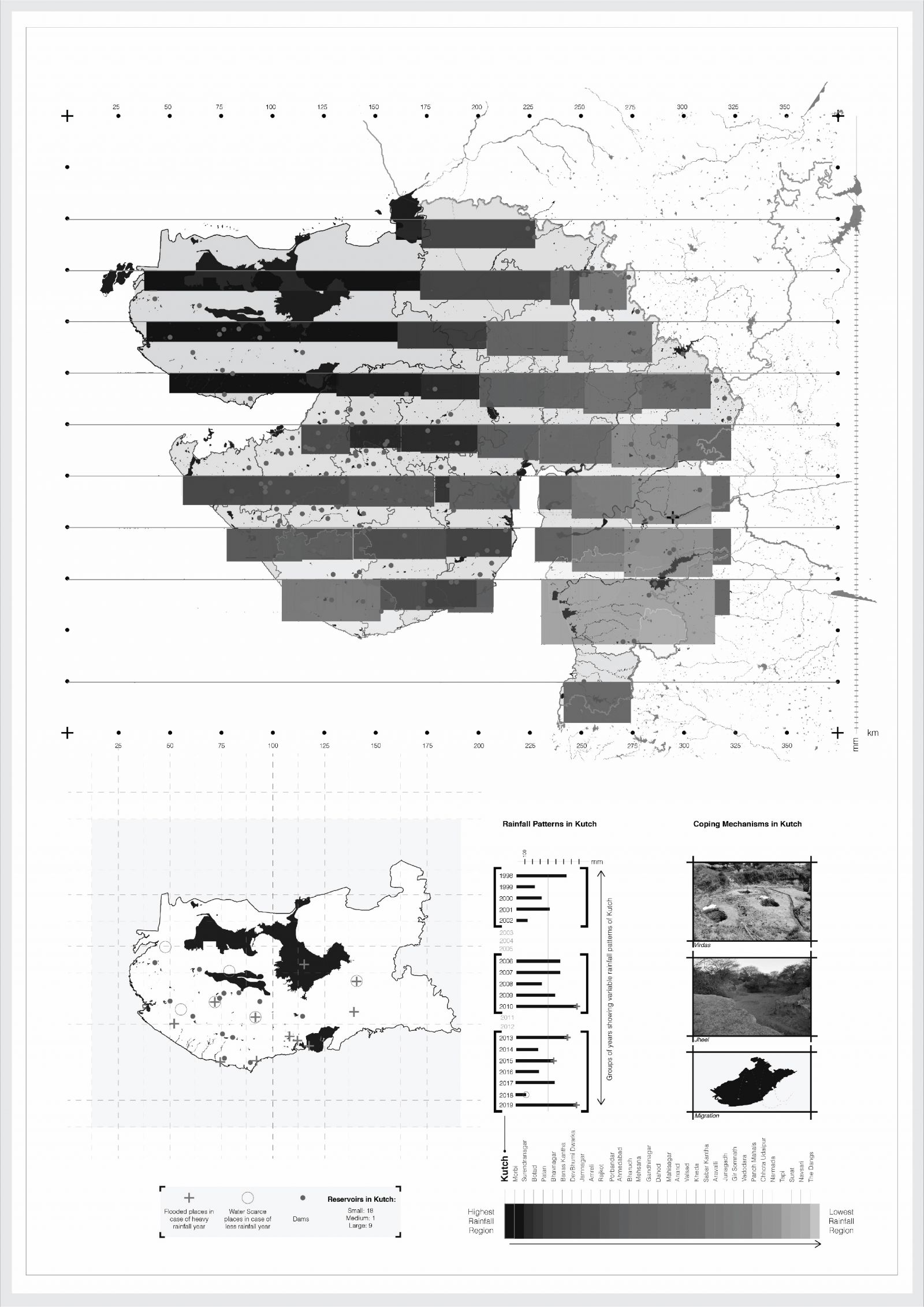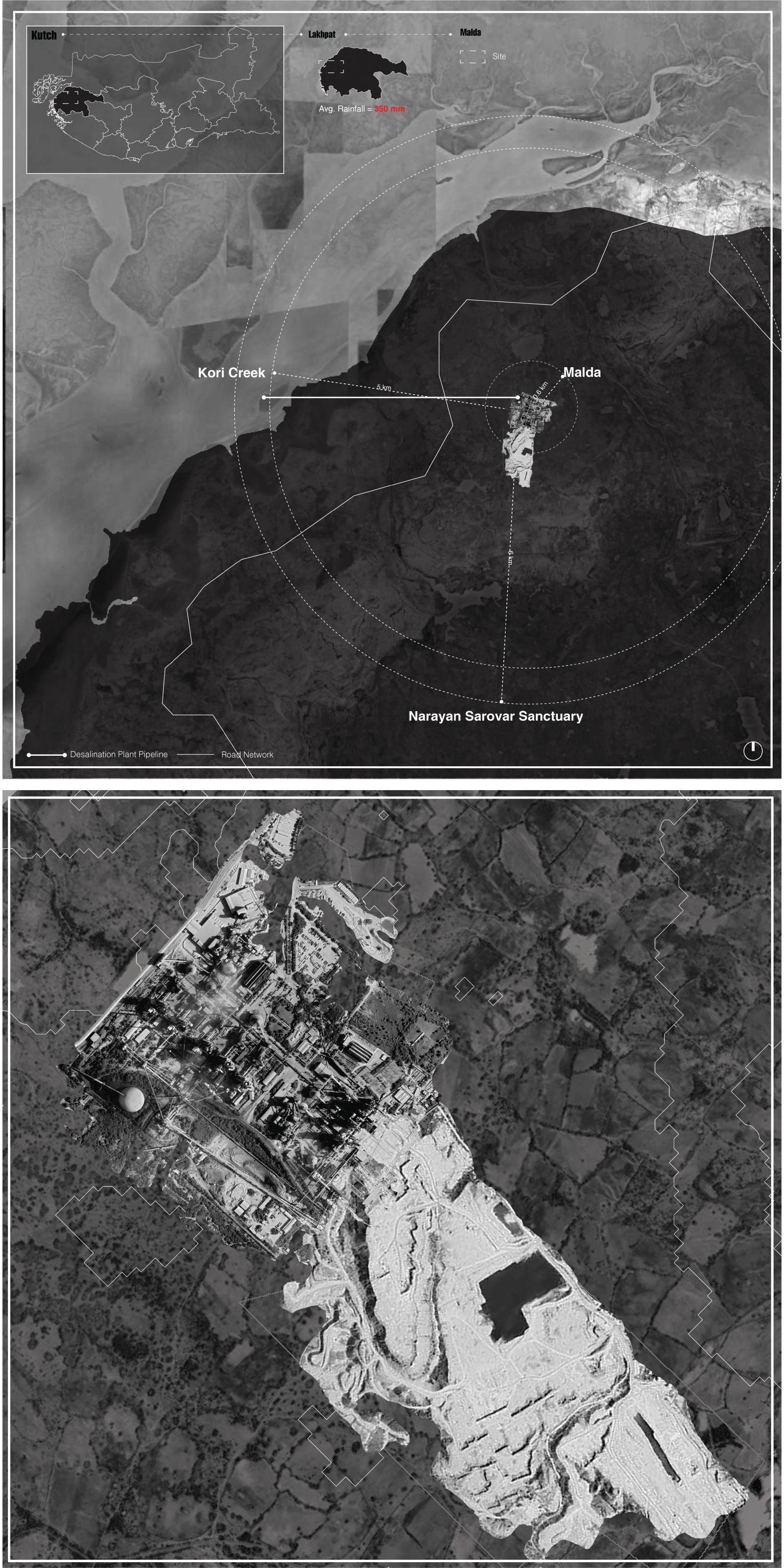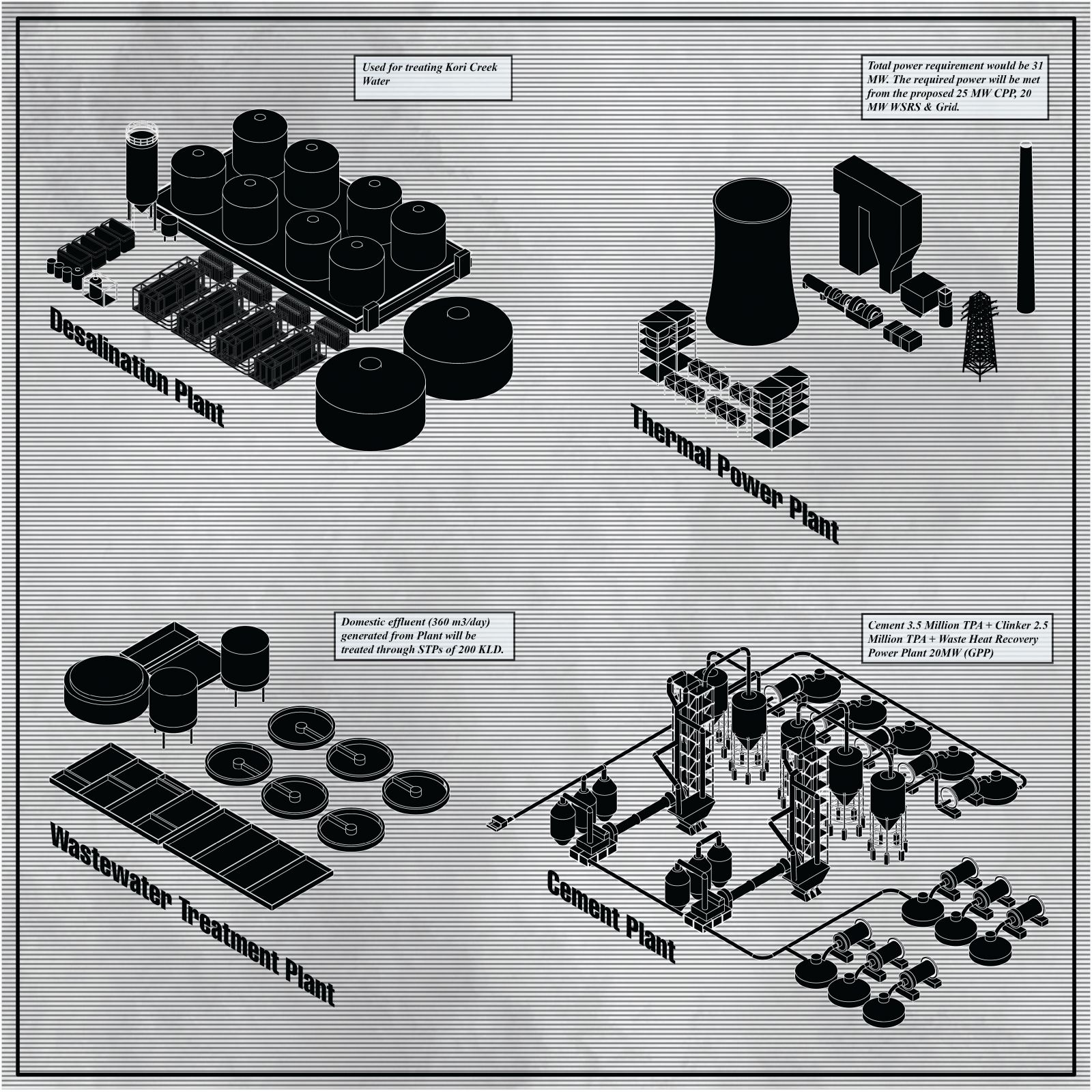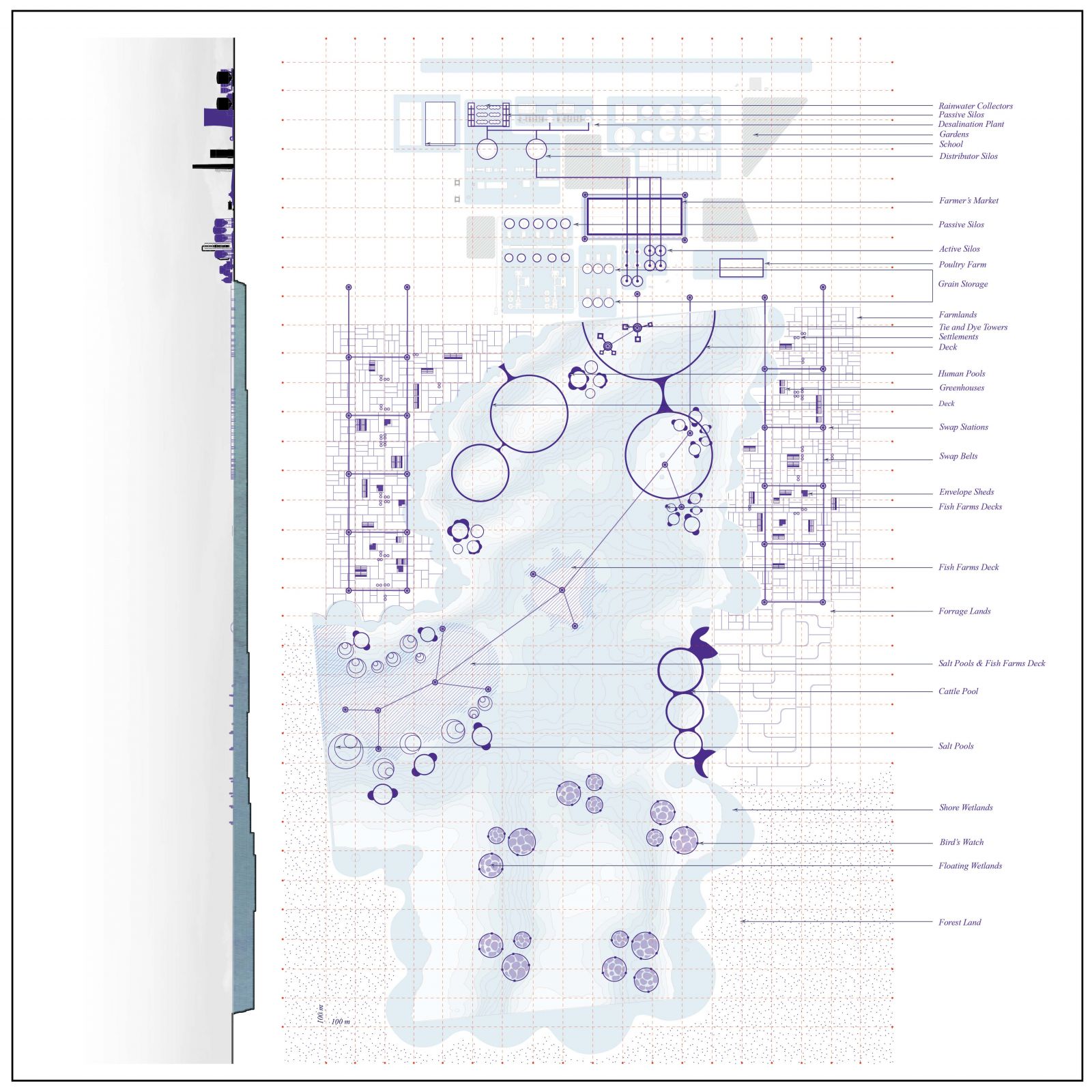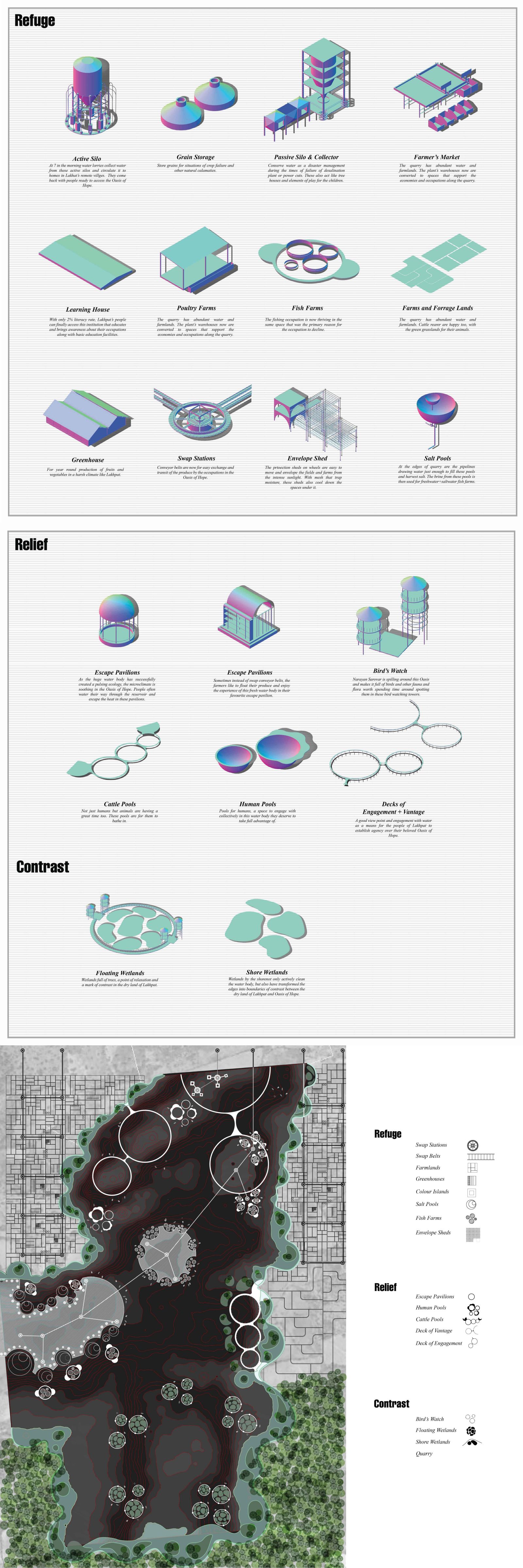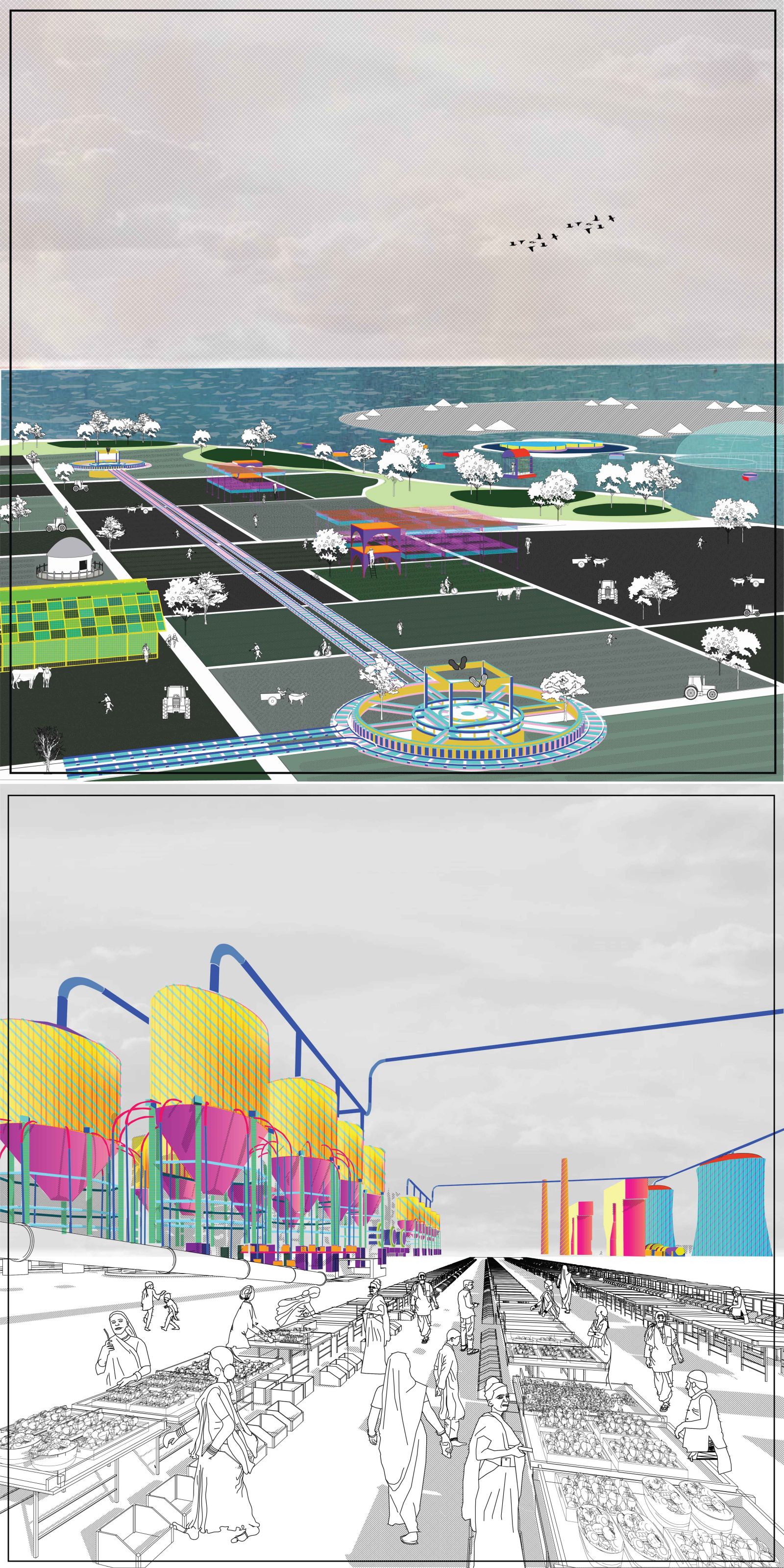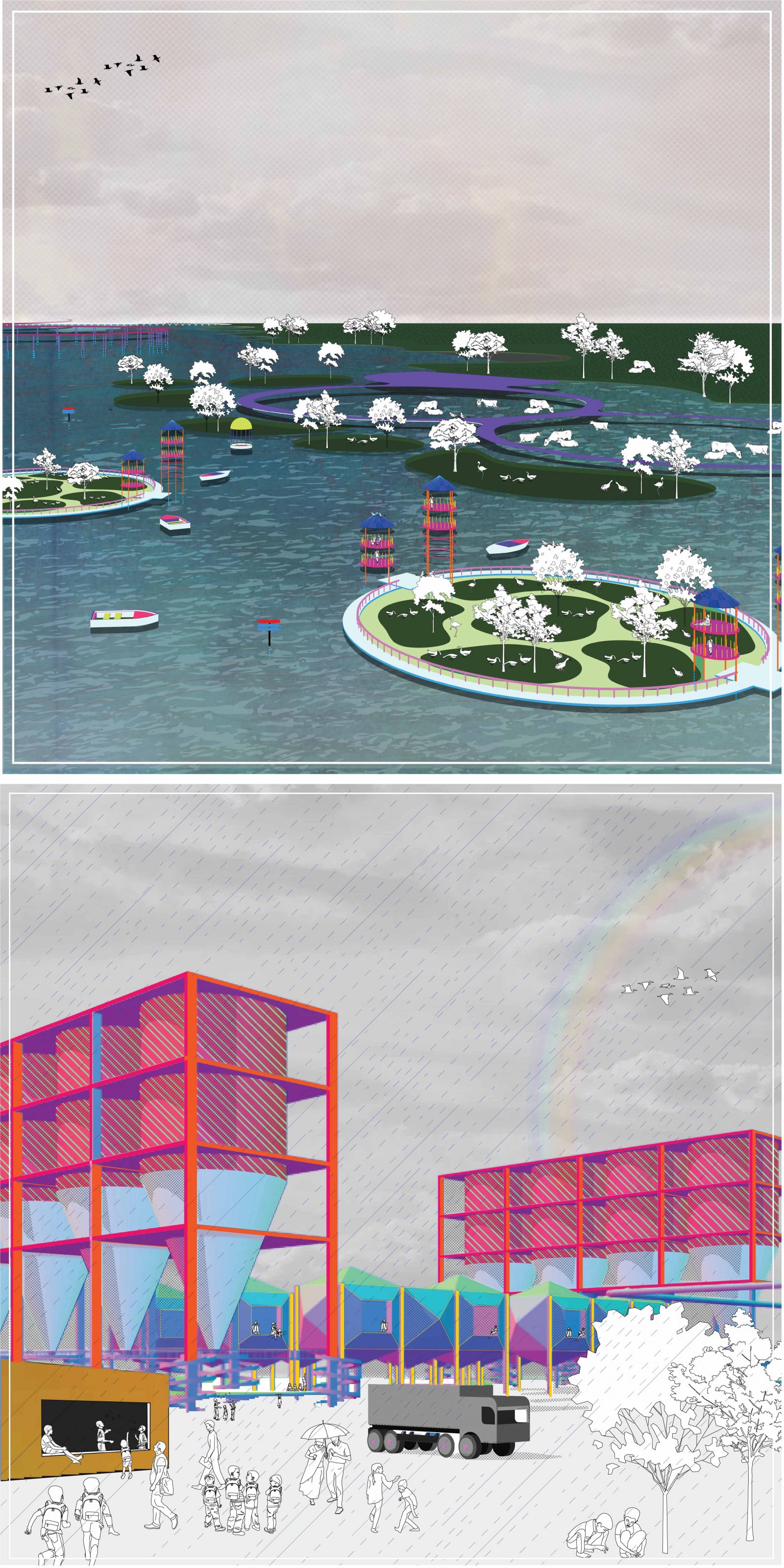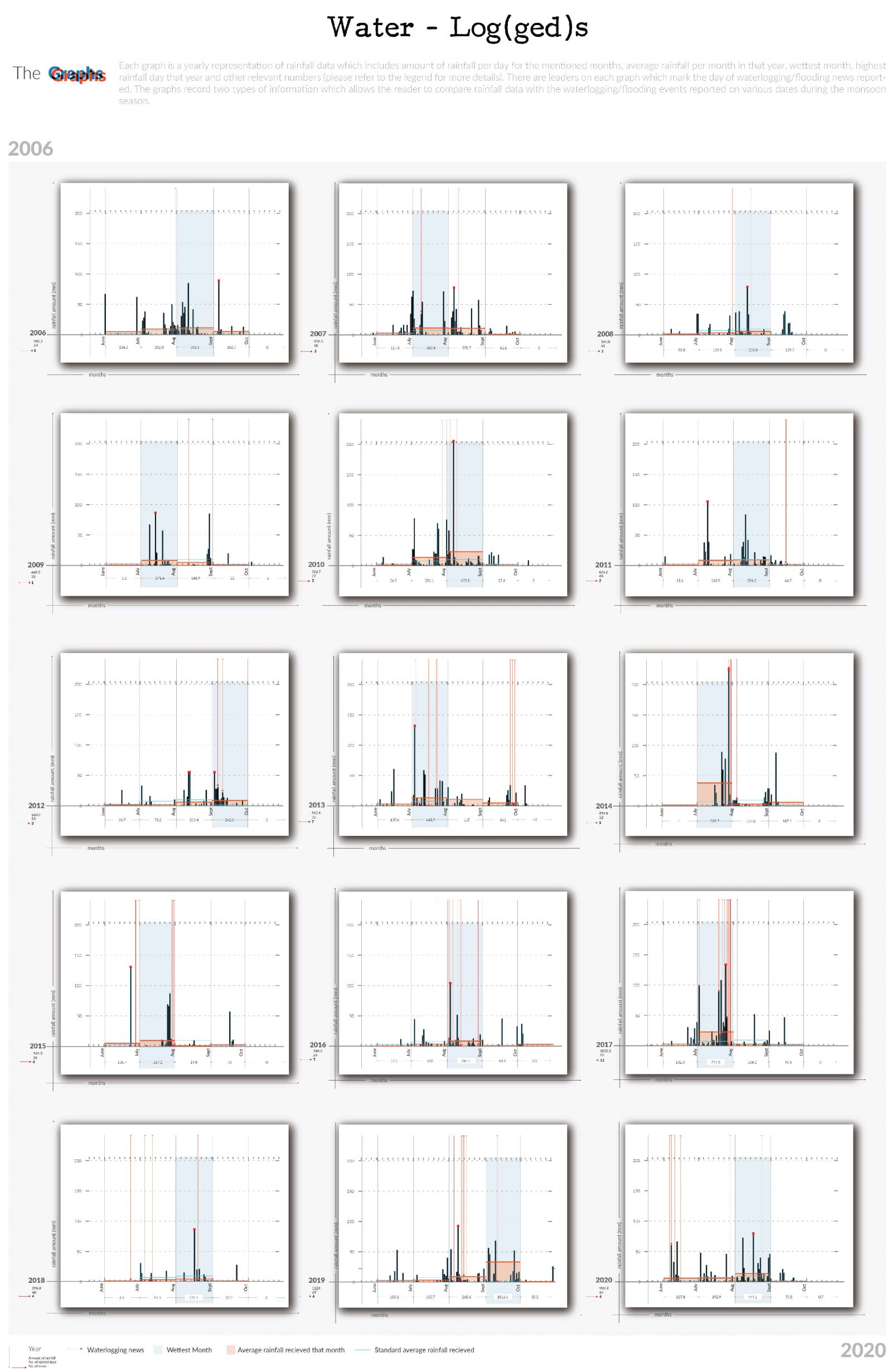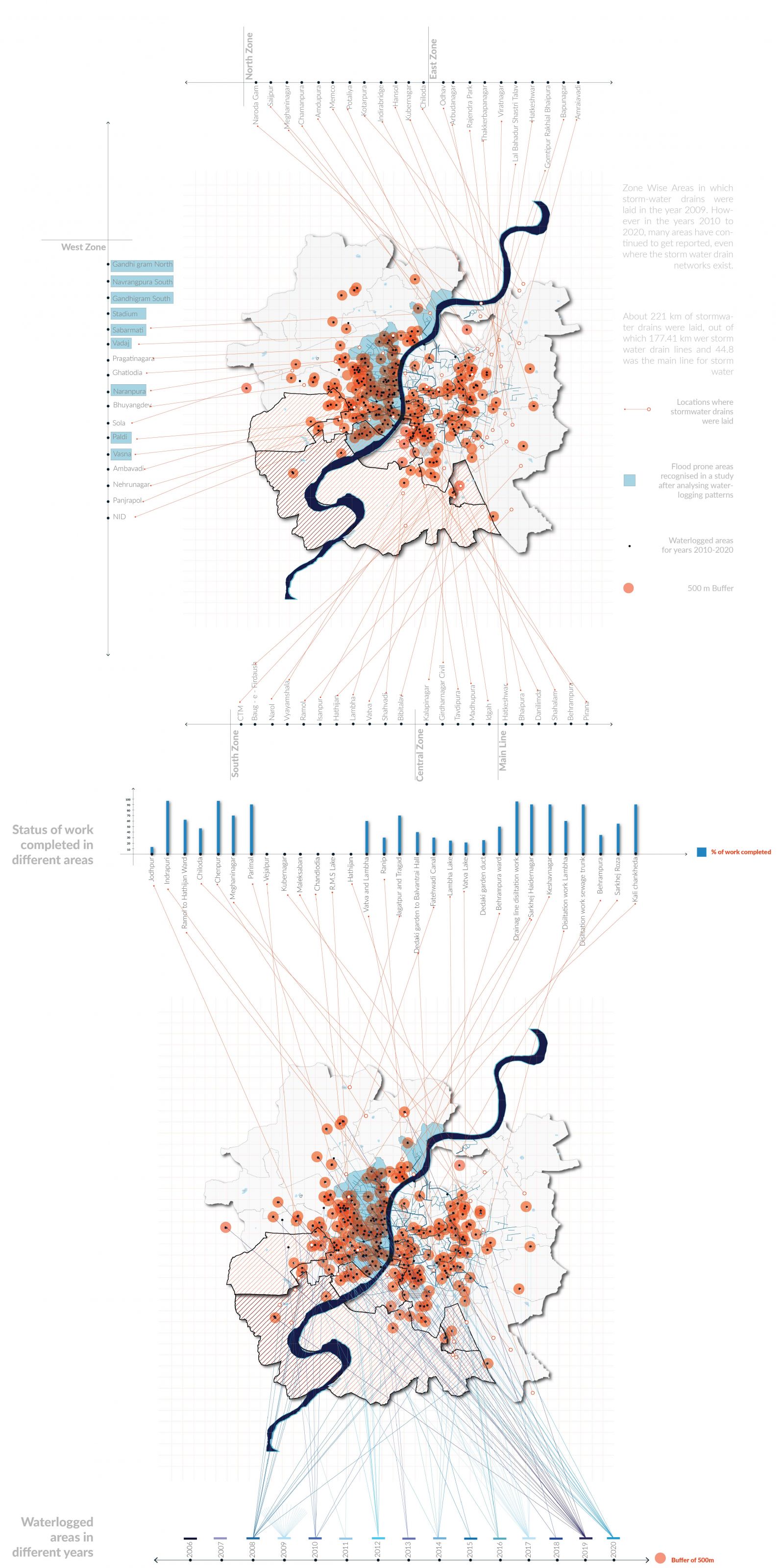Your browser is out-of-date!
For a richer surfing experience on our website, please update your browser. Update my browser now!
For a richer surfing experience on our website, please update your browser. Update my browser now!
Region & Speculation-
An Oasis of Hope: An attempt at redirecting the attention to places like Lakhpat where the residents don't have to surrender their lifestyle and livelihoods to water scarcity. This project also aims to highlight the potential of a water body to be able to create a resilient system by co-depending on other subsystems that can flourish in the presence of water.
City Scale-
Water Log(ged)s: The project investigates rainfall patterns and waterlogging for Ahmedabad city by recording per day rainfall data over the years, news reports and spatial layouts of relevant infrastructures.
